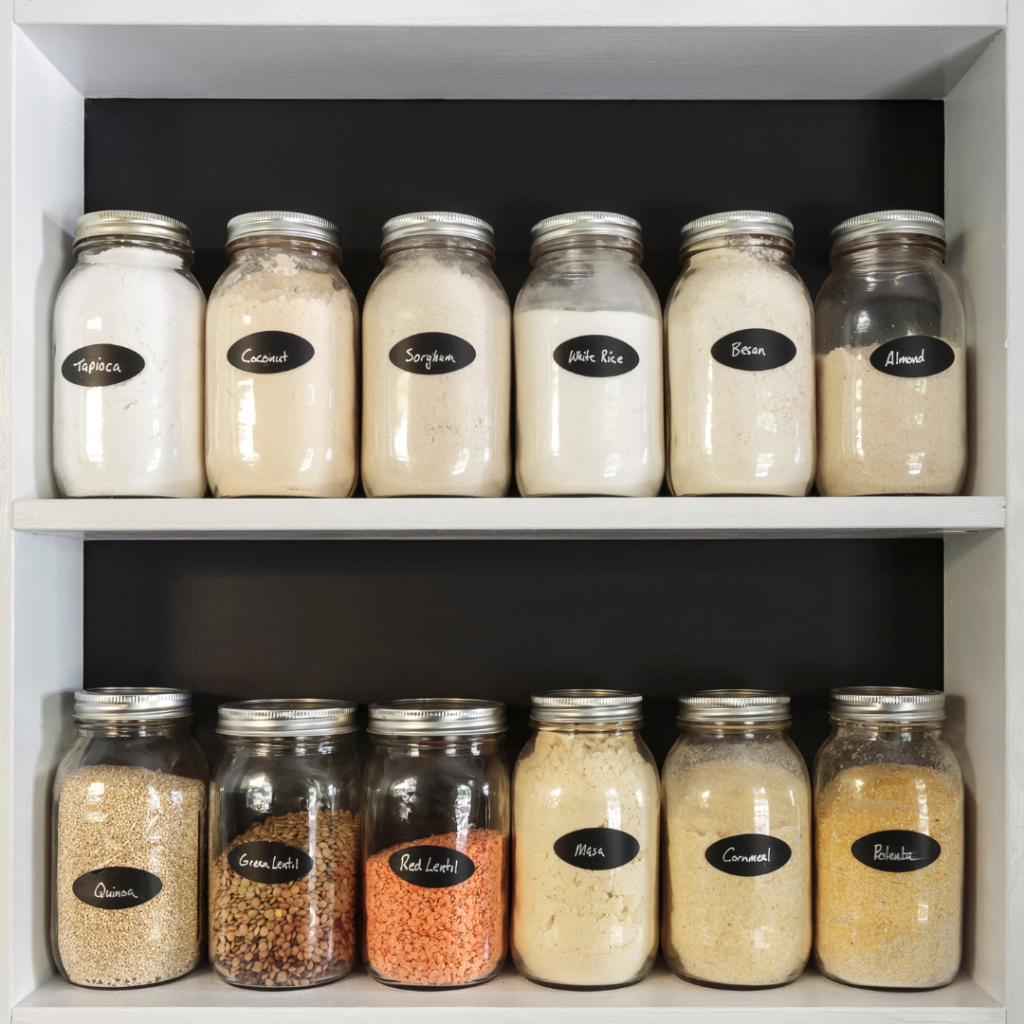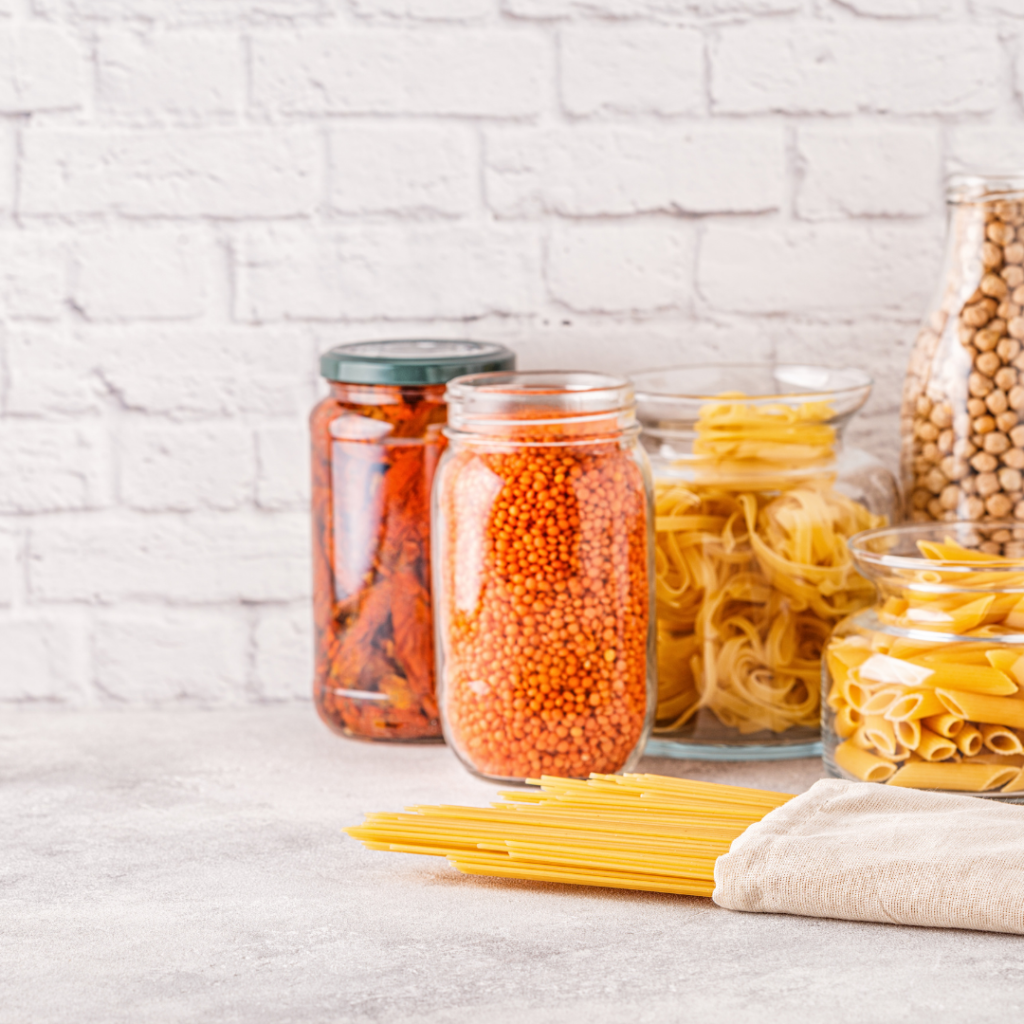If you’ve been following along the last few weeks, you were probably wondering if we were ever going to get here. Because let’s be honest, when most of us think of “emergency preparedness” we automatically think, “two year supply of food,” or “food storage.”

Figure Out Where You Are
On an afternoon a few months ago, Susan and I inventoried our food storage and emergency supplies….We have worked since the earliest days of our marriage to follow prophetic counsel about preparing for unforeseen challenges, so “examining” our state of readiness in the midst of the virus and earthquakes seemed like a good and timely thing to do. We wanted to find out our grades on these unannounced tests.
David A. Bednar
One of the biggest things to figure out as you start to build your food storage is figuring out what you have, and how much you have. There are LOTS of printable inventory sheets available on Pinterest. We have some pinned for you to check out here.
One of my favorite ways to track our inventory is on the StockUp app. I can count all of my shelf stable food, and account for the number of people we have, and the number of servings available, and it will tell me by category how long our food storage would last! This has helped us prioritize areas. It doesn’t calculate everything we have, but we have a rough estimate of where we are, which is super helpful when we plan.

Start Small
“You do not need to go into debt, may I add, to obtain a year’s supply. Plan to build up your food supply just as you would a savings account. Save a little for storage each pay-check. Can or bottle fruit and vegetables from your gardens and orchards. Learn how to preserve food through drying and possibly freezing. Make your storage a part of your budget. Store seeds and have sufficient tools on hand to do the job. If you are saving and planning for a second car or a TV set or some item which merely adds to your comfort or pleasure, you may need to change your priorities. We urge you to do this prayerfully and do it now.“
Spencer W. Kimball
You can build up a decent storage very quickly, without going and spending a fortune. You don’t need to run up credit cards, or anything like that. If you are just starting, here are some things that we have used, that have really helped!
Buy one extra. This was the advice my grandfather gave me on my way to college. There was no way I could go to college and have the beautiful storage rooms I had grown up with my parents and grandparents. So, when I went to the store and bought a can of corn, I’d buy two. My bill is about fifty cents to a dollar more, but now I have something to stay on my shelf.
Buy on sale and in bulk. Who doesn’t love Costco? GET ALL THE SAMPLES! Costco is awesome for building up your storage. Shopping at Costco, Sam’s Club, and other wholesale stores can be an adjustment, because you are buying more things, which seems more expensive in the onset, but remember you are saving in the long run, because you are paying less per item (or ounce).
Caselot sales are another great way to purchase things in bulk. These tend to come in the spring and fall, where canned goods, baking goods, and other shelf-stable items are discounted greatly. Some stores will require that you buy the whole case, (like if you were shopping at Sam’s Club or Costco) but some will let you mix and match!
Grocery stores will also have great sales on other items like drinks, cold cereals, etc. These are usually influenced by what are called sale cycles. I have several links to sale cycle lists in the resources below!
Set a Weekly Budget. Try to keep your food bill to about the same each week. Some weeks it seems like EVERYTHING runs out at once. Your shampoo bottle empties, the eggs are gone, the cleaners all need to be replaced. But other weeks, all you need is a couple of things, because some of the leftovers lasted longer, or however that blissfully lined up. So, use the extra to buy a few extra things!

Focus on Things You Eat
Sometimes there are times when you need to live off your food supply, such as the grocery stores are empty due to emergency, a baby comes, someone loses a job, etc., you want to have some foods your family is comfortable eating. Especially in the case of a loss of income, the longer you can eat what you are used to eating, the less stressful that situation will be. Using the buy one extra trick will help with this, because it builds up what you are already eating.
Creating freezer meals is another great way of building up your current menu on hand. I have had big cooking days with my mother-in-law, where we get together and bake 4-5 entrees, and freeze them. Other times, I have bought enough to double a recipe, and freeze half for another day. This quickly fills the freezer with things your family likes! (I loved this when I had my babies, because then instead of worrying about dinner, I could just throw something in the crockpot, or warm it up on the stove quickly.)

Stock Up on the Basics
From the standpoint of food production, storage, handling, and the Lord’s counsel, wheat should have high priority. Water, of course, is essential. Other basics could include honey or sugar, legumes, milk products or substitutes, and salt or its equivalent. The revelation to store food may be as essential to our temporal salvation today as boarding the ark was to the people in the days of Noah.
Ezra Taft Benson
Another thing to work on building up a reserve of is the basics. What do you need to keep your house running? These are the things that tend to disappear quickly during an emergency. (Looking at you toilet paper.) Flour, sugar, rice, paper goods, cleaners, all disappear quickly, as we all experienced in the last couple of years. You don’t have to go to crazy at the store; that causes problems for everyone. But, as you get low on something like dish soap, buy one to replace it (or two, so that you have one spare).
Some ideas of home basics to have in your storage:
- Toilet Paper
- Paper Towels
- Tissues
- Dish Soap
- Cleaners
- Hand Soap
- Body Wash
- Lotions/Creams
- Shampoo and Conditioner
- Medicine, First Aid Items
- Sunscreen, Anti-Itch Creams, Afterburn/Aloe Gel
Ideas for basic food ingredients to have in your storage:
- Water
- Flour
- Sugars (brown and regular)
- Baking Powder and Baking Soda
- Salt
- Seasonings
- Rice
- Pastas
- Beans and Lentils
- Peanut Butter
- Powdered Milk and Drinks
- Canned Foods
- Dried Fruits
- Nuts
- Yeast

Rotate as You Build
As a teenager, I helped clean out my great grandparents’ storage room after they passed away, and we found food that was older than my mother. Maybe we don’t our food to get that old…. maybe, haha. To help prevent this, you want to find a way to rotate your storage that works best for you!
Some people like to use rotating shelves. These shelves can sit in your pantry shelves, and you can load the cans at the top, and the oldest moves to the bottom. Sometimes people will use a permanent marker to write the date that it was purchased so that it’s easier to see than searching for the expiration date. Many load shelves from the back as they purchase, and pull the older cans and food forward. Do whatever works best for you and your space you have, you may need to experiment!
Most of all, remember that anything you start is great! This is a marathon, not a sprint. Building up your storage will bring a sense of peace when money gets tight, supplies run short, or life’s unexpected turns come. You’ve got this.
XO,
Cheri
Resources
- Spencer W. Kimball, Prepare for the Day of Tribulation, October 1980
- Sale Cycles, Hip2 Save
- What to Buy When, Frugal Living Mom
- Seasonal Sales Cycles, Joyfully Thriving
- Prepare Ye , Ezra Taft Benson, October 1973
- We Will Prove Them Herewith, David A. Bednar, October 2020

